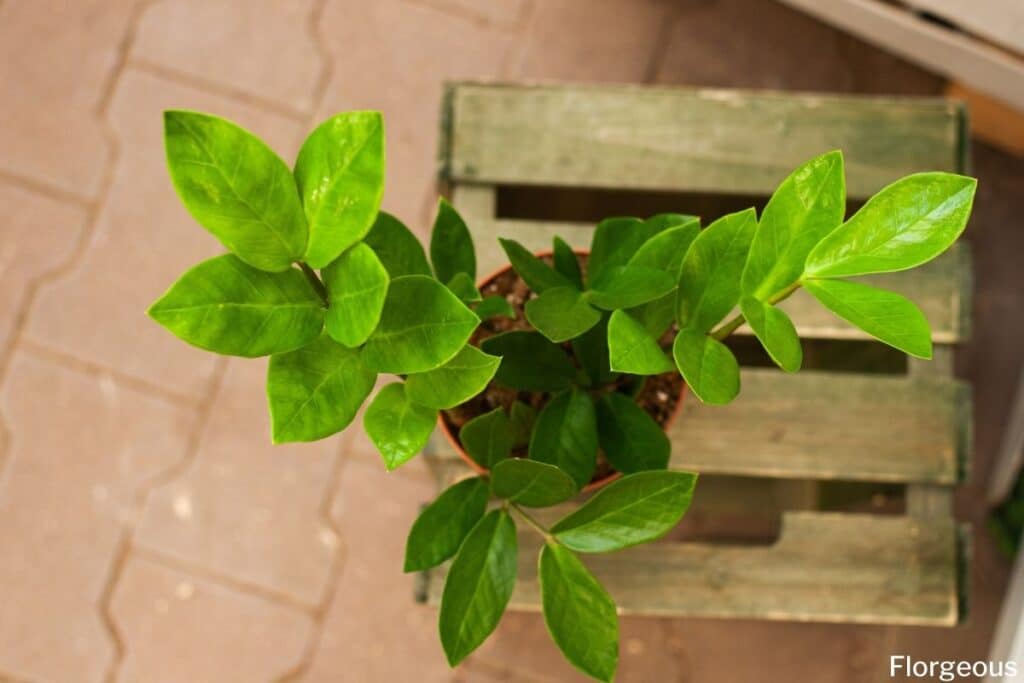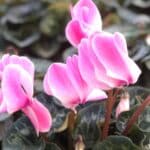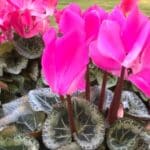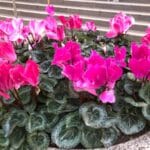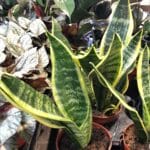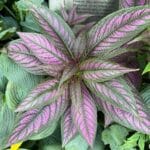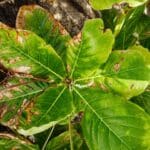The ZZ plant (Zamioculcas zamiifolia) is one of the most interesting and easy to grow houseplants out there. It first became popular and accessible in the 1990s, and since then, more and more awesome new forms have been developed for trade.
The ZZ plant grows slowly, making it a patient and rewarding addition to your indoor greenery. At the moment, there are at least a dozen available, and more are on the way! Here’s a list of 9 great ZZ plant varieties that you can grow in your home after reading our zz plant care guide.
Raven
Raven zz plant is the popular trade name of the ‘Dowon ZZ plant’ cultivar. This eye-catching form is becoming more popular, and thankfully easier to find as well. Like the birds they are named after, these dark, glossy plants can look almost black in low lighting. On closer inspection, you’ll notice that the foliage is in fact a dark shade of purple.
This is definitely a plant for people who like unusual and striking plants, especially types that are easy to care for. Just set it in a bright spot, water it lightly, and enjoy its impact on your environment. This tropical perennial plant grows to the full size of around 3 feet (0.9m) or slightly taller but does so at a very manageable(read slow) rate.
‘Dark Zamicro’ & ‘Zamicro’
If you like the dark and mysterious look of ZZ Raven, but want something a little smaller, then ‘Dark Zamicro’ is just the plant for you. The dark green leaves of this cultivar typically stay under about 16 inches (40cm) in height. This newly patented cultivar has the same upright growth form as the regular Zanzibar gem we love so much but also features flattish, relatively small, leaflets that measure a little over half an inch across (17mm).
Like ZZ Raven, the leaves of ‘Dark Zamicro’ Start out light green when young, darkening as they mature. The regular ‘Zamicro’ has the same compact properties, only in the natural emerald green shade as the parent species.
‘Zenzi’
‘Zenzi’, or the dwarf ZZ, is another compact form that makes a wonderful beginner houseplant for your home. On these plants, the leaflets are more tightly grouped on the rachis (Leaf-stalk). The rachis is also more robust, making for a more chunky-looking plant with a compact growth habit.
It grows a little smaller than the regular version, typically reaching a little over a foot (0.3m) in height. Essentially, this very attractive houseplant has the same zz plant care requirements as the regular Zamioculcas zamiifolia but, needs a little less space. What’s not to like, right?
‘Lucky’
‘Lucky’ is another patented cultivar that is more compact than the regular zz plant species. This lucky plant is most easily differentiated by its more rounded and flattened leaflet shape. This form is also a little smaller than the regular Zanzibar gem.
‘Albino’
The Albino ZZ plant stands out with its unique appearance. Unlike the typical dark green foliage of ZZ plant types, the Albino variety exhibits striking white leaves.
These light leaves make a beautiful difference and give any room a bit of grace. With a height of two to three feet, this low maintenance plant is a good choice for plant lovers who like plants that look nice. Its appeal is also helped by the fact that it doesn’t need much care and is strong.
‘Akebono’
The Akebono ZZ plant is a captivating variety among ZZ plants. Its name translates to the color of the sky at dawn, and its appearance lives up to this poetic description.
Originating from East Africa, the Akebono ZZ plant boasts pale, pinkish foliage with subtle golden undertones. These unique hues set it apart from other ZZ plant varieties.
With its fleshy deep green leaves that store water, the Akebono adapts well to varying conditions and can reach heights of 3 to 4 feet. A touch of dawn’s beauty right in your indoor green space!
ZZ Jungle Warrior
The ZZ Jungle Warrior lives up to its name—it’s as tough as nails and can thrive in almost any environment. Perfect for beginner gardeners, this variety features deep, dark foliage.
Initially, the leaves emerge in a murky shade of green, but over time, they transform into a rich purple hue. With its robust and chunky appearance, the Jungle Warrior adds a touch of resilience and drama to your indoor green space.
Gold Variegated ZZ Plants
It is unclear as to whether there are stable variegated cultivars, but variegated forms are available from time to time. These plants can be difficult to find and tend to be pretty pricey, but they are undeniably beautiful!
Variegated ZZ plant can be quite variable with different leaves on the same plant, often having very different levels of variegation. Even the individual leaflets on a single leaf can range from completely, green, to variegated, to completely yellow.
These plants have the same care needs as regular green Zanzibar gems but will need a little more bright indirect light because of the decreased chlorophyll content of the green and yellow leaves.
White Variegated ZZ Plants
Like the gold variegated forms, white variegated ZZ plants are very variable but have leaves that are marked in green and white, rather than green and golden-yellow. The white forms vary from a clean white, through cream to silver or grey. The leaves may vary from a uniform, single shade to spotted, all the way through to completely green.
FAQs
How many different types of ZZ plants are there?
There are several cultivars of ZZ plants (Zamioculcas zamiifolia) available, but the most common types include the standard ZZ plant and variegated varieties with striped or marbled foliage. Additionally, there are newer cultivars like Raven ZZ and Zenzi ZZ, which have darker foliage.
What is the rarest ZZ plant?
The rarest ZZ plant is subjective and may vary depending on availability and demand in the market. Cultivars like Raven ZZ, which feature deep purple-black foliage, are considered rare and highly sought after by collectors.
What is the difference between ZZ plant and Zenzi ZZ plant?
The main difference between ZZ plant and Zenzi ZZ plant is the growth habit and leaf shape. Zenzi ZZ plants have smaller, more compact growth habits with tightly clustered foliage, while standard ZZ plants have larger, more elongated leaves and a more upright growth habit.
What is the difference between ZZ plant and chameleon ZZ plant?
Chameleon ZZ plants are a specific zz cultivar known for their variegated foliage. The main difference between chameleon ZZ plants and standard ZZ plants lies in their leaf coloration. Chameleon ZZ plants have leaves that change color throughout the growing season, transitioning from green to yellow or white as they age, while standard ZZ plants typically have solid green foliage.
Are ZZ plants toxic to cats?
Yes, ZZ plants (Zamioculcas zamiifolia) are considered toxic to cats if ingested. The plant contains calcium oxalate crystals, which can cause oral irritation, vomiting, and difficulty swallowing if eaten by cats. It’s important to keep ZZ plants out of reach of cats and monitor them closely if they are exposed to the plant.
Conclusion
The different cultivars of the ZZ plant show awesome variation in size, leaf shape, and color. They all make wonderful houseplants that pretty much anyone can keep happy and healthy. Why not add a few of these wonderful low-maintenance plants to your collection?

